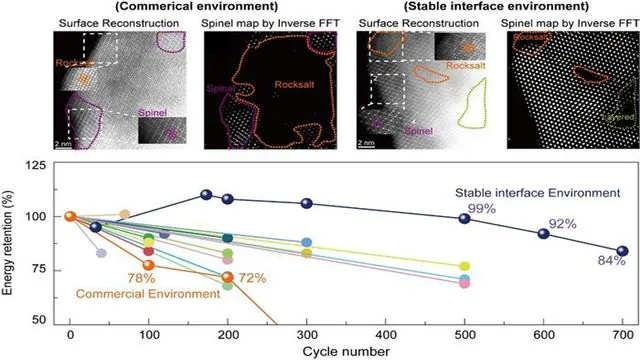
Revolutionary Breakthrough in Lithium-Ion Battery Technology Could Change the Future of Energy Storage!
2025-01-02
Author: John Tan
Revolutionary Breakthrough in Lithium-Ion Battery Technology Could Change the Future of Energy Storage!
A cutting-edge research initiative led by Professor Jihyun Hong and Dr. Gukhyun Lim from the POSTECH Graduate Institute of Ferrous & Eco Materials Technology has unveiled a groundbreaking strategy aimed at significantly boosting the durability of lithium-rich layered oxide (LLO), a next-generation cathode material for lithium-ion batteries (LIBs). With the potential to transform energy applications, this research was published in the prestigious journal *Energy & Environmental Science*.
Lithium-ion batteries are essential for a diverse range of applications, from electric vehicles (EVs) to renewable energy storage systems (ESS). The innovative LLO material not only presents up to 20% greater energy density compared to traditional nickel-based cathodes but also makes strides towards economic and environmental sustainability by reducing the reliance on nickel and cobalt while enhancing lithium and manganese content.
Nevertheless, challenges such as capacity fading and voltage decay during repeated charge-discharge cycles have posed significant obstacles to the widespread commercialization of LLO. While previous investigations have pinpointed structural changes in the cathode as a primary source of these problems, the precise mechanisms driving this instability have remained elusive.
The POSTECH research team made a crucial discovery: oxygen release plays a vital role in destabilizing the LLO structure during battery operation. To combat this issue, they proposed an innovative approach to stabilize the interface between the cathode and the electrolyte, effectively reducing the likelihood of oxygen escape. By optimizing the electrolyte composition, the researchers successfully dampened oxygen emissions, leading to remarkable results.
The enhanced electrolyte developed by the team achieved an outstanding energy retention rate of 84.3% after 700 charge-discharge cycles—a stark contrast to traditional electrolytes, which averaged only 37.1% energy retention after 300 cycles. This advancement could significantly extend the lifespan of lithium-ion batteries, paving the way for longer-lasting energy solutions.
Moreover, the team's analysis highlighted that surface structural changes in the LLO material play a crucial role in determining the overall stability and performance of the battery. By addressing these critical structural changes, the researchers not only improved the overall lifespan of the cathode but also significantly reduced detrimental reactions, such as electrolyte decomposition within the battery.
Professor Jihyun Hong remarked, "Our use of synchrotron radiation allowed us to analyze chemical and structural differences between the surface and interior of the cathode particles. This insight underscored that the stability of the cathode surface is fundamental to the integrity and efficacy of the overall material. We anticipate that our findings will spark new innovations in next-generation cathode technology."
With energy demands rising globally and the urgent need for sustainable energy solutions, this research holds unprecedented promise for the future of battery technology. As the world transitions towards greener alternatives, innovations such as these could be pivotal in shaping the electric vehicle sector and renewable energy storage systems for years to come.
Stay tuned for further updates as this research progresses, potentially leading us to a brighter, more sustainable energy future!


 Brasil (PT)
Brasil (PT)
 Canada (EN)
Canada (EN)
 Chile (ES)
Chile (ES)
 Česko (CS)
Česko (CS)
 대한민국 (KO)
대한민국 (KO)
 España (ES)
España (ES)
 France (FR)
France (FR)
 Hong Kong (EN)
Hong Kong (EN)
 Italia (IT)
Italia (IT)
 日本 (JA)
日本 (JA)
 Magyarország (HU)
Magyarország (HU)
 Norge (NO)
Norge (NO)
 Polska (PL)
Polska (PL)
 Schweiz (DE)
Schweiz (DE)
 Singapore (EN)
Singapore (EN)
 Sverige (SV)
Sverige (SV)
 Suomi (FI)
Suomi (FI)
 Türkiye (TR)
Türkiye (TR)
 الإمارات العربية المتحدة (AR)
الإمارات العربية المتحدة (AR)